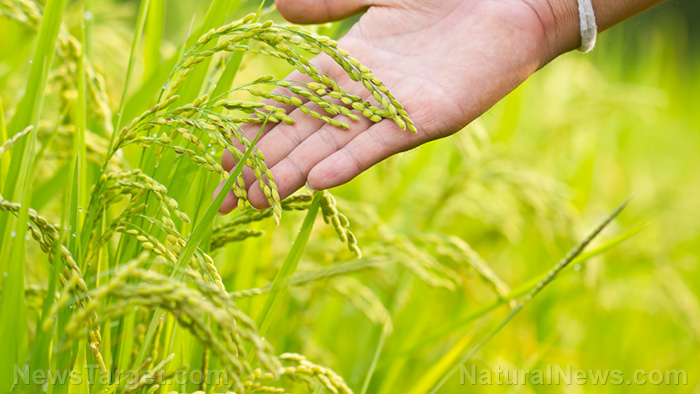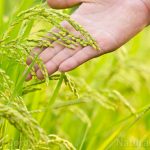
Toxic heavy metal contamination from cadmium in the soil stresses rice crops and threatens both crop viability and food safety
Wednesday, August 01, 2018 by Ralph Flores
http://www.realsciencenews.com/2018-08-01-toxic-heavy-metal-contamination-from-cadmium-in-the-soil-stresses-rice-crops.html

A study published in the IOSR Journal of Environmental Science, Toxicology and Food Technology has revealed that the current progress of scientific literature regarding the effects of cadmium accumulation in soil, coupled with the development of various procedures to treat it, significantly aids toxin-free rice production. Led by researchers from the South China Agricultural University and Sierra Leone Agricultural Research Institute (SLARI) – Rokupr Agricultural Research Centre, the paper broadly reviewed the cadmium toxicity of rice – in particular, the phytoavailability, effects, and strategies to increase rice yield and reduce cadmium contamination.
Earlier studies have identified cadmium as a major pollutant in rice paddy fields. The chemical, noted to be toxic to plants and can cause adverse effects in humans, is already found in agricultural soils due to rapid advances in industrialization and urbanization. A major agent for the spread of cadmium is its inclusion in phosphate fertilizers, wastes, and biosolids. (Related: Cadmium is a disease-related avoidable pollutant with manmade causes.)
Even at very low concentrations, cadmium is a highly toxic trace element; a person regularly exposed to the heavy metal is prone to cardiovascular diseases such as peripheral artery disease and increased systolic blood pressure. Moreover, chronic exposure to cadmium increases the likelihood of kidney damage. For women, the “itai-itai” or ouch-ouch disease is a complication of chronic kidney exposure. The symptoms of the condition include severe osteoporosis and osteomalacia (softening of the bones) as an effect of severe renal dysfunction, anemia, low blood pressure, and the presence of cadmium in urine.
In rice plants, cadmium is a non-essential element that can be easily absorbed through the roots. This makes it even more toxic than metals such as nickel, copper, zinc, and lead – cadmium toxicity is usually up to 20 times higher than other heavy metals.
The effects of cadmium toxicity are far-reaching in rice plants. It changes its physical structure and function, as well as its biochemical features, which has been a growing cause of concern in terms of food safety and crop yield. Studies have shown that cadmium toxicity adversely impacted the morphology of rice plants more than any form of environmental stress. These include stunted growth, reduction in leaf area index and root length, and the accumulation of fresh and dry matter.
Concerning physiology, cadmium is “solidly phytotoxic,” severely impacting plant development, ultimately leading to the death of the plant. It also disrupts photosynthesis of a plant, in particular, its carbon reduction cycle and water balance.
It also triggers oxidative stress in rice plants, causing peroxidation of lipids that are present in plants and effectively destroying it. This, in turn, weakens the plants’ seed germination ability, growth potential, nutrient uptake, photosynthetic pigment, and overall yield.
Still, efforts to address minimize the amount of cadmium in rice paddies has been the leading issue among researchers. These methods include the following:
- Signaling molecules and plant growth regulators – This involves the external application of antioxidants like glutathione, ascorbic acid, a-tocopherol, carotenoids, and antioxidant enzymes in an effort to repair oxidative stress in plants.
- Biochar – Biochar is a carbon-rich compound that is made from the combustion of organic materials using a limited oxygen supply. This is applied to soil to improve its structure and significantly reduce cadmium absorbed by plants.
- Organic materials – Materials such as compost are known to curb the amount of cadmium in soil. However, there have been studies that specific composts like vermicompost may cause higher cadmium accumulation in plants. A residue made of rapeseed applied as green manure has been noted to reduce the transfer of cadmium and improve soil quality.
- Irrigation – Proper water management is a cost-effective measure in the reduction of cadmium accumulation and water uptake in rice plants, with studies showing that regular flooding of rice fields during rice growth has curbed the absorption of cadmium.
The authors of the study posited that further studies would be needed to determine specific aspects; however, the progress made in understanding the effects of cadmium in other plants can be used in studies aimed to reduce its toxicity in rice plants.
Learn more about crop yields and how they are affected by toxic chemicals at Science.news.
Sources include:
Tagged Under: Tags: agriculture, badscience, cadmium, crop yield, farming, goodscience, Heavy metals, oxidative stress, phytoavailability, phytotoxic, Plants, research, rice crops, soil amendment, soil contamination, soil health, toxic chemicals, toxic elements





